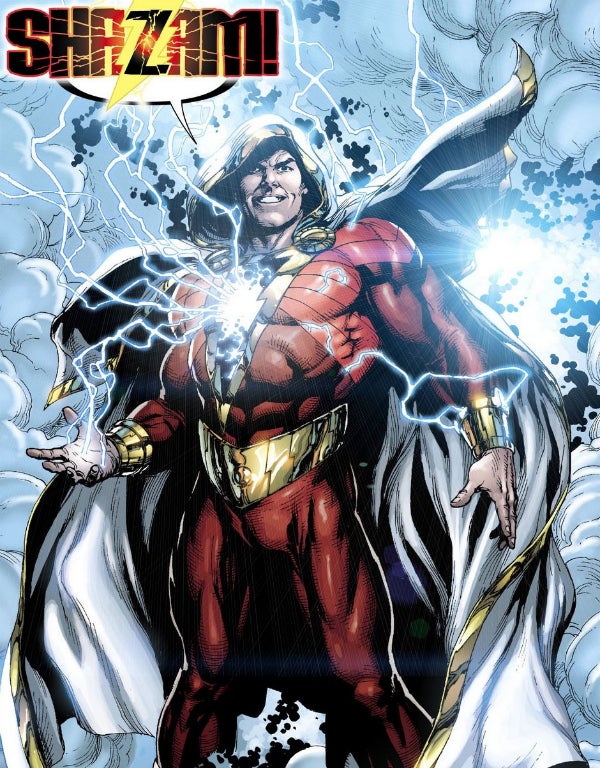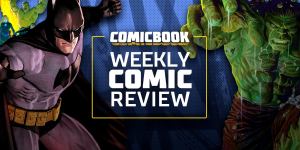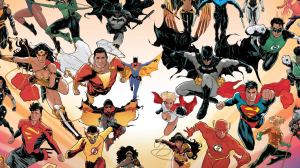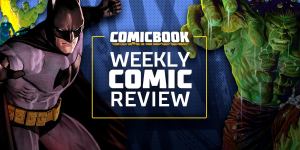
Now that Dwayne “The Rock” Johnson has essentially confirmed that he will play a leading part in an upcoming DC/Warner Bros. Shazam film (whether Johnson plays the titular hero or his arch rival Black Adam), now is as good of a time as any to start speculating about what a big screen adaptation of Shazam could look like.
Shazam actually has one of the most complex and convoluted publication stories in the history of the comic book industry. For one, the character was originally named Captain Marvel, but after a long-running legal dispute with Marvel Comics over the rights to that title, he was renamed Shazam in 2011. Beyond the legal troubles with his name, the character was first introduced by Fawcett Comics in 1940 and was used in the company’s publications until DC sued Fawcett in 1953, claiming Captain Marvel was too similar to Superman. The Marvel family was licensed by DC in the early 1970s, and eventually the company acquired the rights to all of the Fawcett-Marvel characters in the early 1990s. From there, Marvel has been a part of a number of reboots and reimaginings all with varying levels of success.
Videos by ComicBook.com
Still, one thing that has been fairly consistent about the character is his origin story. Before he becomes Captain Marvel/Shazam, the hero starts out as young boy named Billy Batson who stumbles upon a magical wizard. The wizard bestows upon Billy the power to become Captain Marvel by shouting the word “Shazam!” As Marvel, Billy is as strong as Superman, making him one of the most powerful heroes in the comic book universe.
So now that the facts behind the character are out of the way, here are five different Shazam stories that feature elements of the his origin, making them ideal jumping on points for curious readers, while also serving as potential inspiration for a film.

5. Shazam! The Monster Society of Evil
This 2009 graphic novel, which was written/illustrated by Bone creator Jeff Smith, is an all-ages appropriate version of the Captain Marvel/Shazam mythos. While the comic is filled with plenty of action sequences, Smith definitely focuses more on the Billy Bastion character, along with his sister Mary, than other incarnations of Marvel/Shazam. A similar approach for a Shazam! movie has some obvious pros and cons. On the plus side, DC/Warner could adapt this text in order to make what has become a totally rarity in Hollywood – a “PG” comic book movie that parents can bring their kids to without hesitation or regret. On the flip side, with so many comic book movies going for “darker” and “edgier” content, it is questionable whether or not hardcore comic book fans would go see a film marketed for all ages.
The Monster Society of Evil also loses some points for not including Black Adam and instead focusing on Mister Mind and his walking, talking group of monster animals. Still, the graphic novel shouldn’t be completely tossed aside because of its rich character moments involving Billy and Mary, along with some very funny moments involving cockroaches and television reporters (just read it).

4. Shazam! Power of Hope
As part of DC’s 2005 oversized graphic novel series, The World’s Greatest Superheroes, Shazam! The Power of Hope is probably most revered for its amazing Alex Ross artwork (who also illustrated the five other volumes in the World’s Greatest series). And while nobody can argue that Ross tends to make any project he works on infinitely better regardless of its script, Paul Dini’s story does deliver, leading to a text that should certainly be mined when it comes time to characterize Marvel/Shazam for the big screen.
As was the case with the other World’s Greatest graphic novels, Dini and Ross focus more on real world/human issues in these stories. In Marvel/Shazam’s case, he reads a letter from a sick child in a hospital that he then goes to visit. At the hospital, he meets one child in a wheelchair who he believes is being beaten by his father. Marvel/Shazam attempts to help the child by threatening his father, but by the end of the story, the hero learns that he’s serving a higher purpose just by visiting these children and giving them hope.
Sure, it’s a little schmaltzy, and it lacks a hero vs. villain showdown, but as the otherwise disappointing The Amazing Spider-Man 2 proved, sometimes those little character moments between the hero and the “regular folks” are more powerful and compelling than an overly CGI-ed fight sequence with a one-dimensional bad guy.

3. Superman/Shazam: First Thunder
While there’s a rumor that Shazam could show up in Batman vs. Superman: Dawn Justice, DC/Warner will likely avoid teaming up Shazam with Superman in what is supposed to be his first solo film.
However, if a team-up movie is green lit, rather than go over the same old ground of having Superman fight another hero, the Superman/Shazam: First Thunder miniseries from 2006 by Judd Winick and Joshua Middleton would be a worthwhile choice for a big screen adaptation. This story reimagines the first ever encounter between Marvel/Shazam and Superman and they are – dare I say – civil to each other. The miniseries also manages to work in a bunch of really classic villains like Lord Sabbac and Lex Luthor, culminating with a final showdown with Doctor Sivana (but sadly, no Black Adam). The series does a great job of accentuating what differentiates Superman from Marvel, especially in its tragic final chapter, when Billy Bastion snaps after a close friend of his is murdered.

2. Shazam! New 52
As part of a backup feature in the New 52 relaunch of Justice League, Geoff Johns and Gary Frank created this new interpretation of Marvel/Shazam, which has since been collected as the part of the graphic novel, Shazam! In addition to giving the hero a bit of a costume redesign, namely a cloak and a hood, Johns and Frank also present Billy as being considerably more angsty and obnoxious than previous incarnations. That’s not necessarily a bad thing, as it is, in many ways, a more reality-based interpretation of a 15-year-old orphan who has languished in the foster care system for years, giving him considerable “trust” issues when it comes the adults in his life. But it is also a far cry from Billy’s aw shucks-ness as featured in the first three stories on this list.
What the story does deliver in spades is a pretty epic showdown between Marvel/Shazam and his arch-nemesis Black Adam, as the reader gets a glimpse of the titular character learning on the job when it comes to being one of the strongest superheroes in the world. Johns and Frank also include the entire Marvel family of characters when Billy inadvertently lends his magic powers to his adopted brothers and sisters. If DC/Warner goes in this direction, it gives the studio a potentially larger cast to play with, which, depending on casting and the script, could be an asset or a hindrance. Either way, with the way DC has pushed its New 52 line of comics since beginning the initiative in 2011, one has to imagine that this version of Marvel/Shazam is a very strong contender to be featured on the big screen.

1. The Power of Shazam!
Probably the only depiction of Marvel/Shazam that could potentially usurp the New 52 interpretation of the character is the one featured in this 1994 graphic novel which was written and painted by Jerry Ordway. The project was born after DC purchased all of the remaining Marvel Family characters from Fawcett Comics. As a result, Ordway’s interpretation closely follows Marvel/Shazam’s Fawcett origin with just a few minor alterations, including a more personal link between Black Adam and Billy Bastion. Ordway also reveals the “mystery man” that leads Billy into the subway where he meets the Wizard (and is transformed into Captain Marvel/Shazam) to be the spirit of his deceased father.
The graphic novel was considered the definitive in-continuity take on Marvel/Shazam and his origin, and led directly to a Power of Shazam! ongoing, which introduced additional Marvel Family members into the mainstream DC Universe. The whole Marvel Family would eventually be retooled as part of the Infinite Crisis event in the mid-2000s, but Ordway’s graphic novel still remains an easy-to-understand, straightforward origin story that includes all of the key characters, making it the best choice for a film adaptation.





